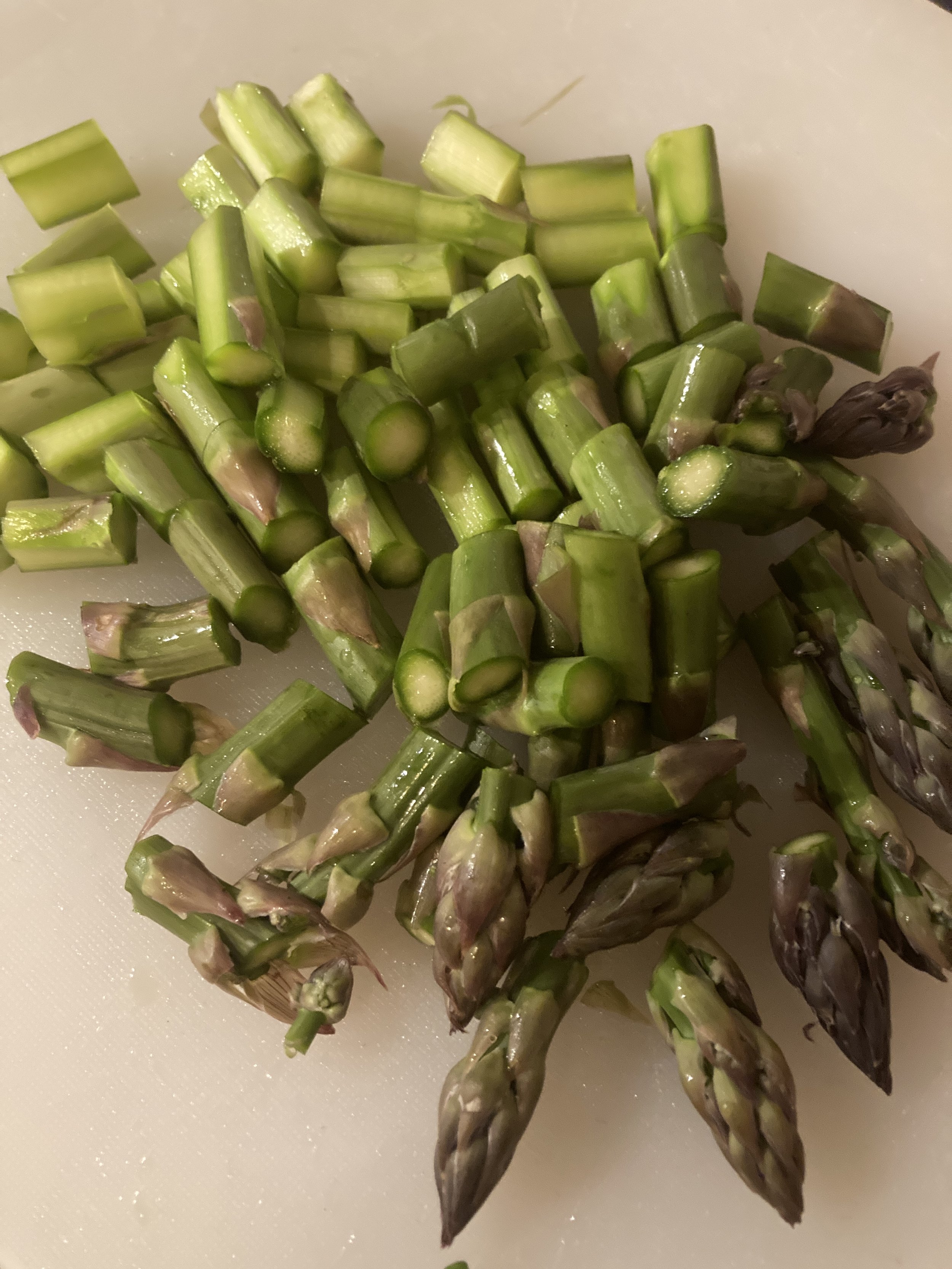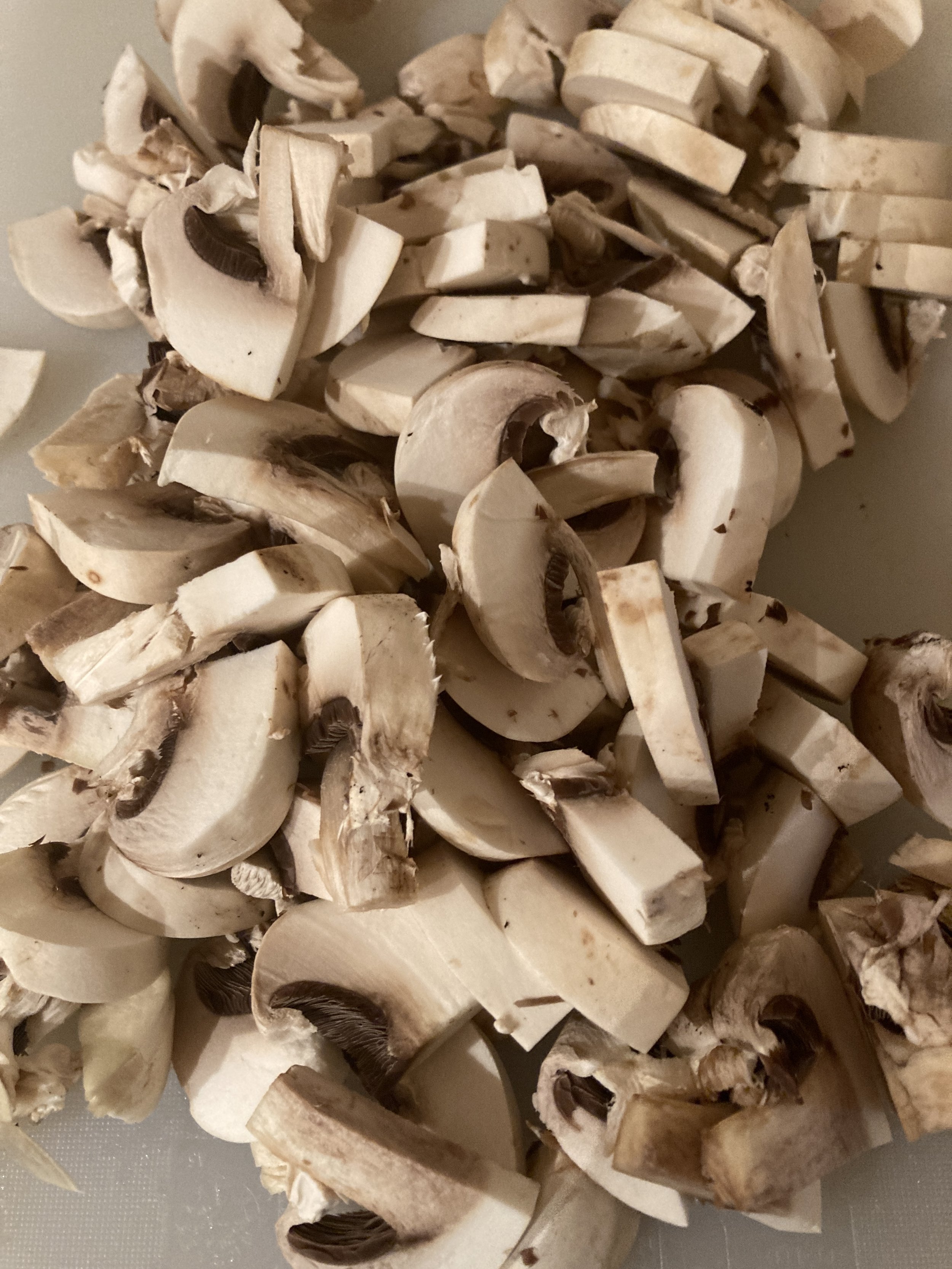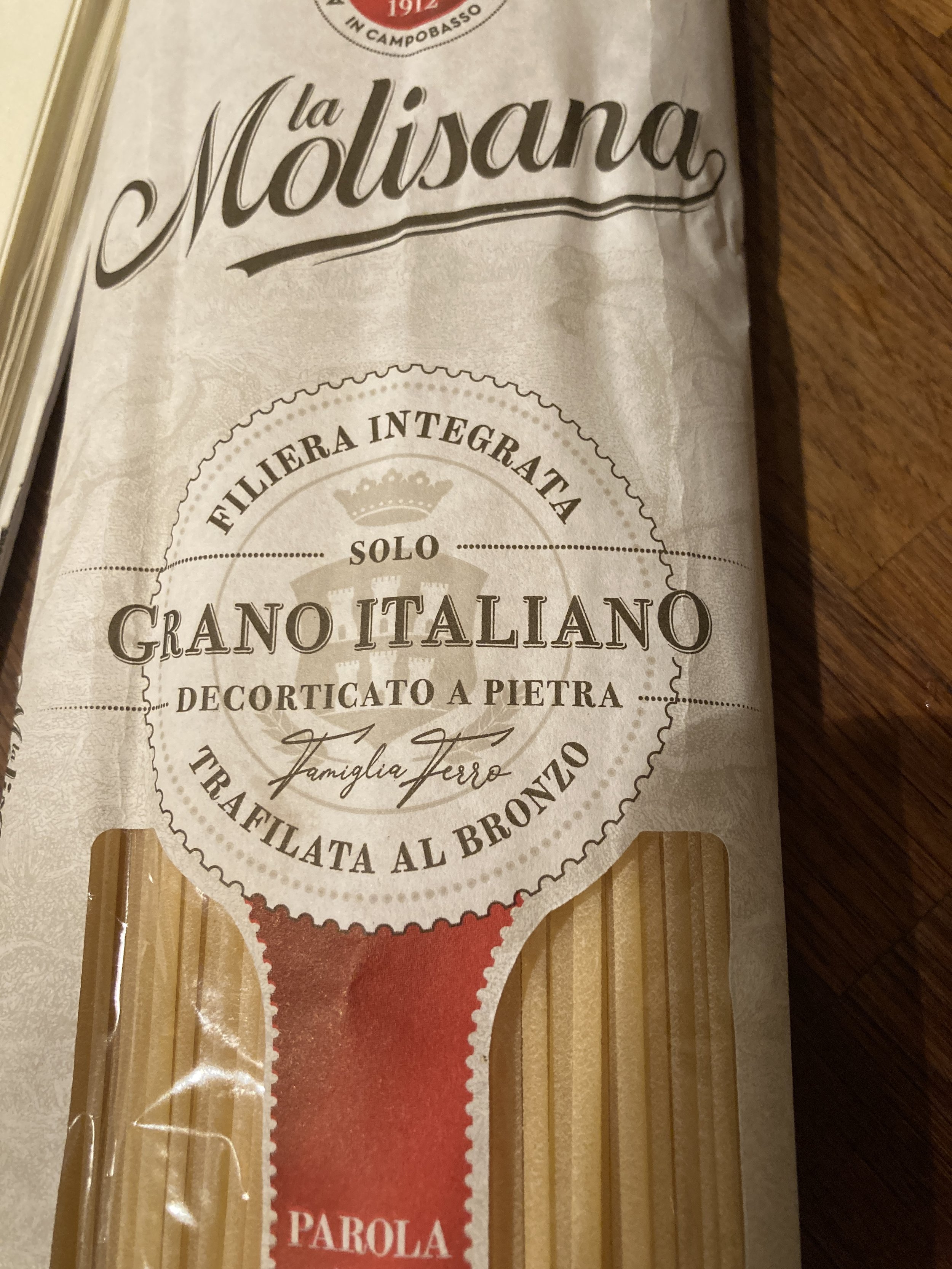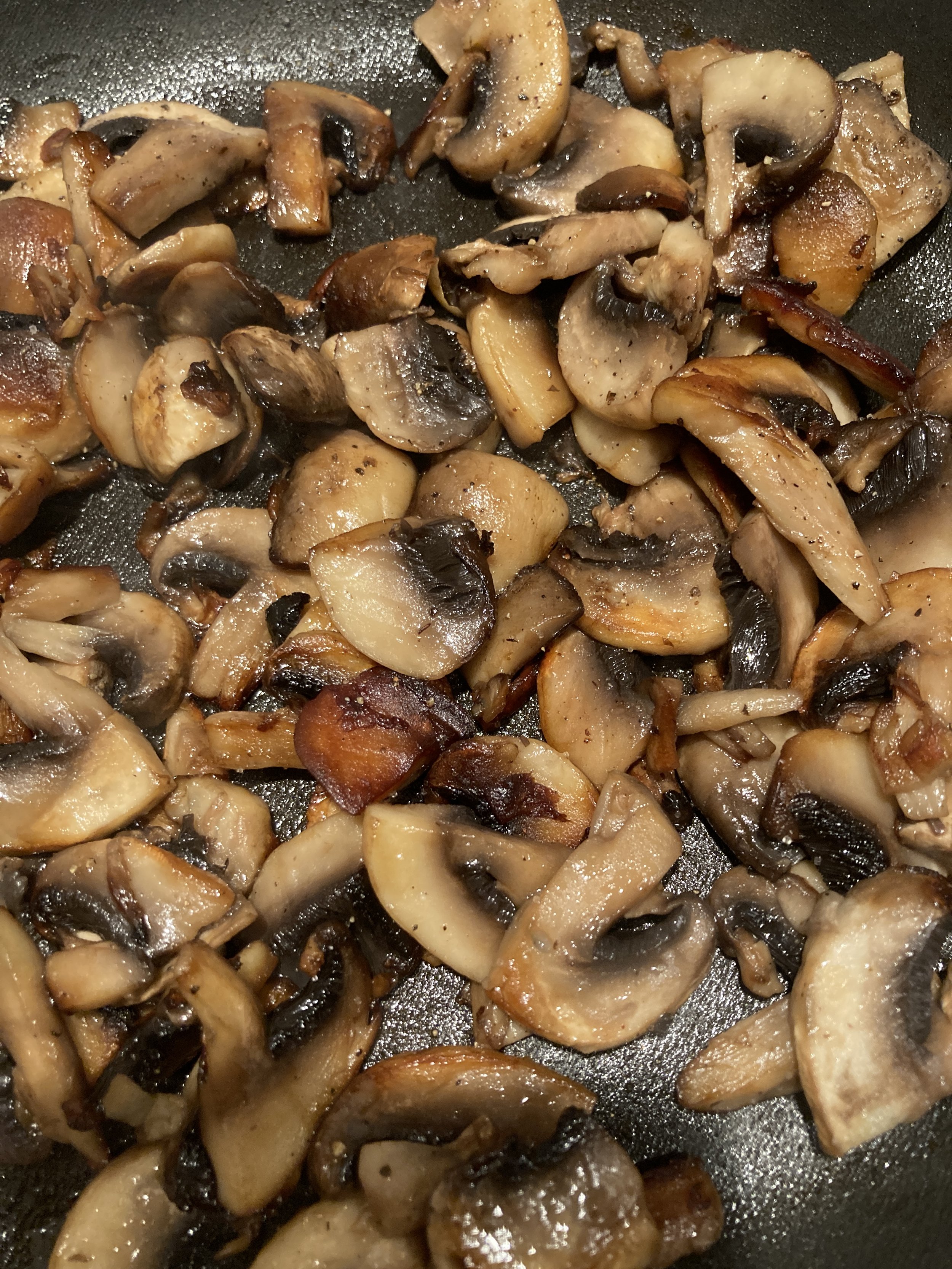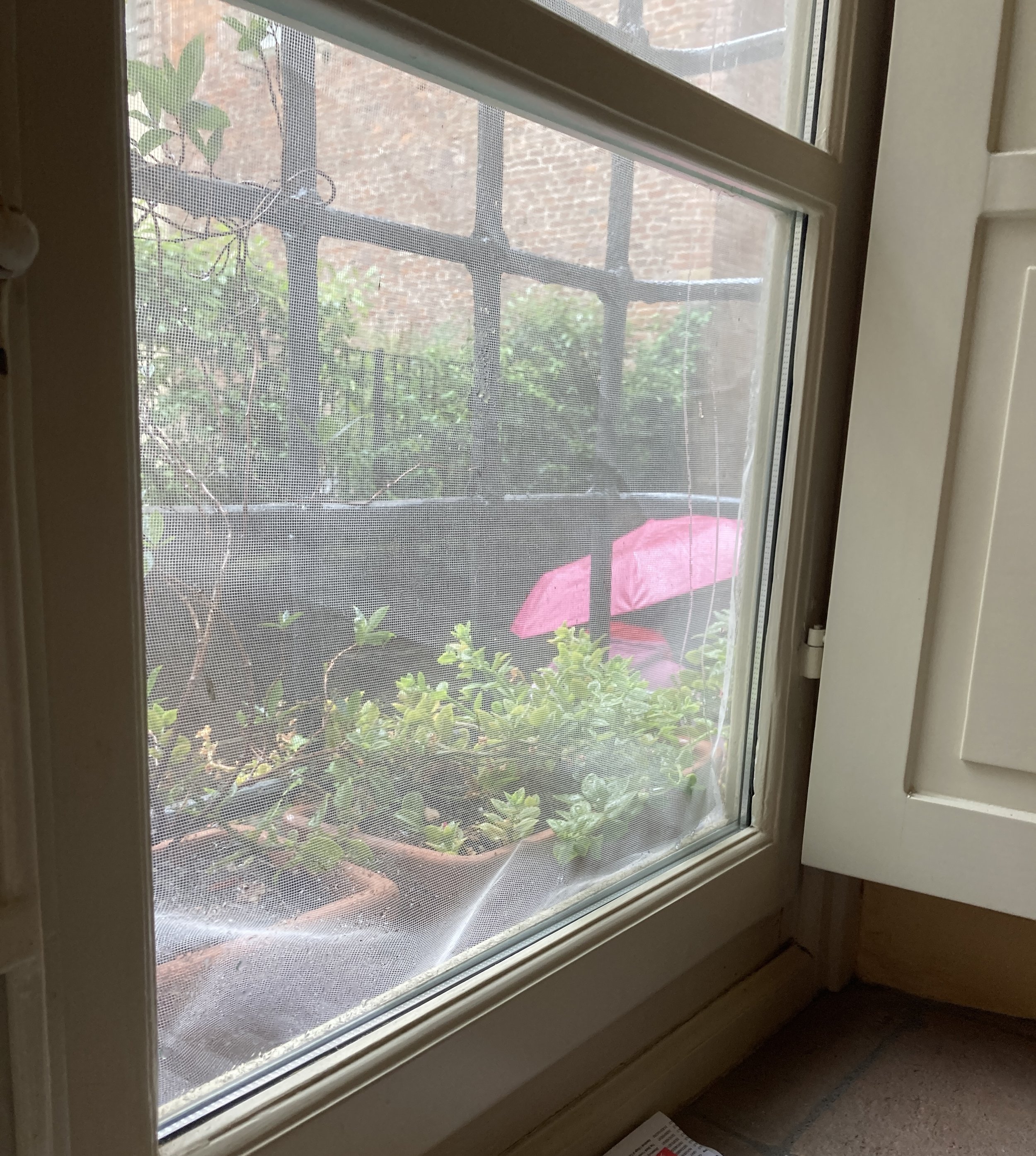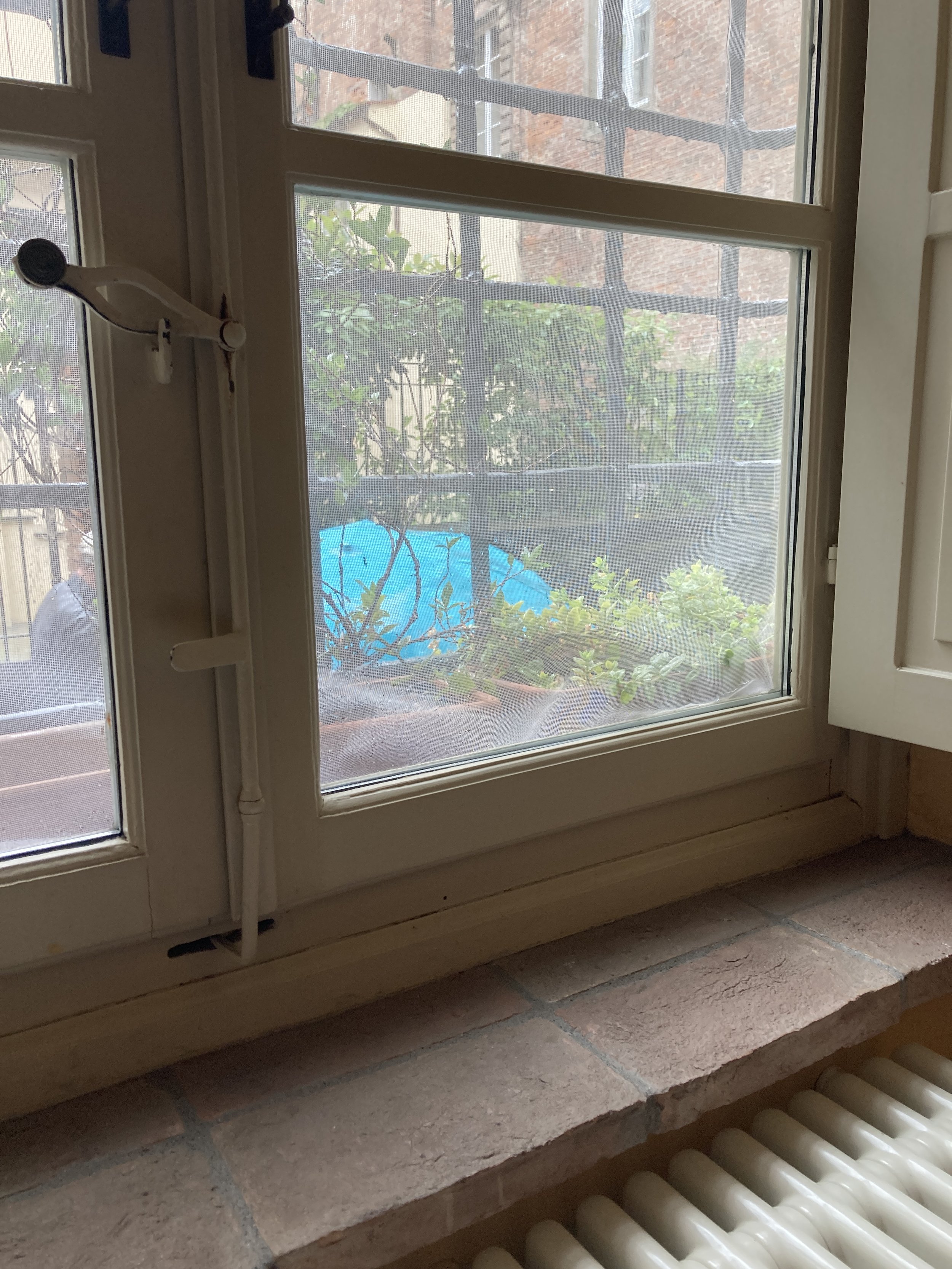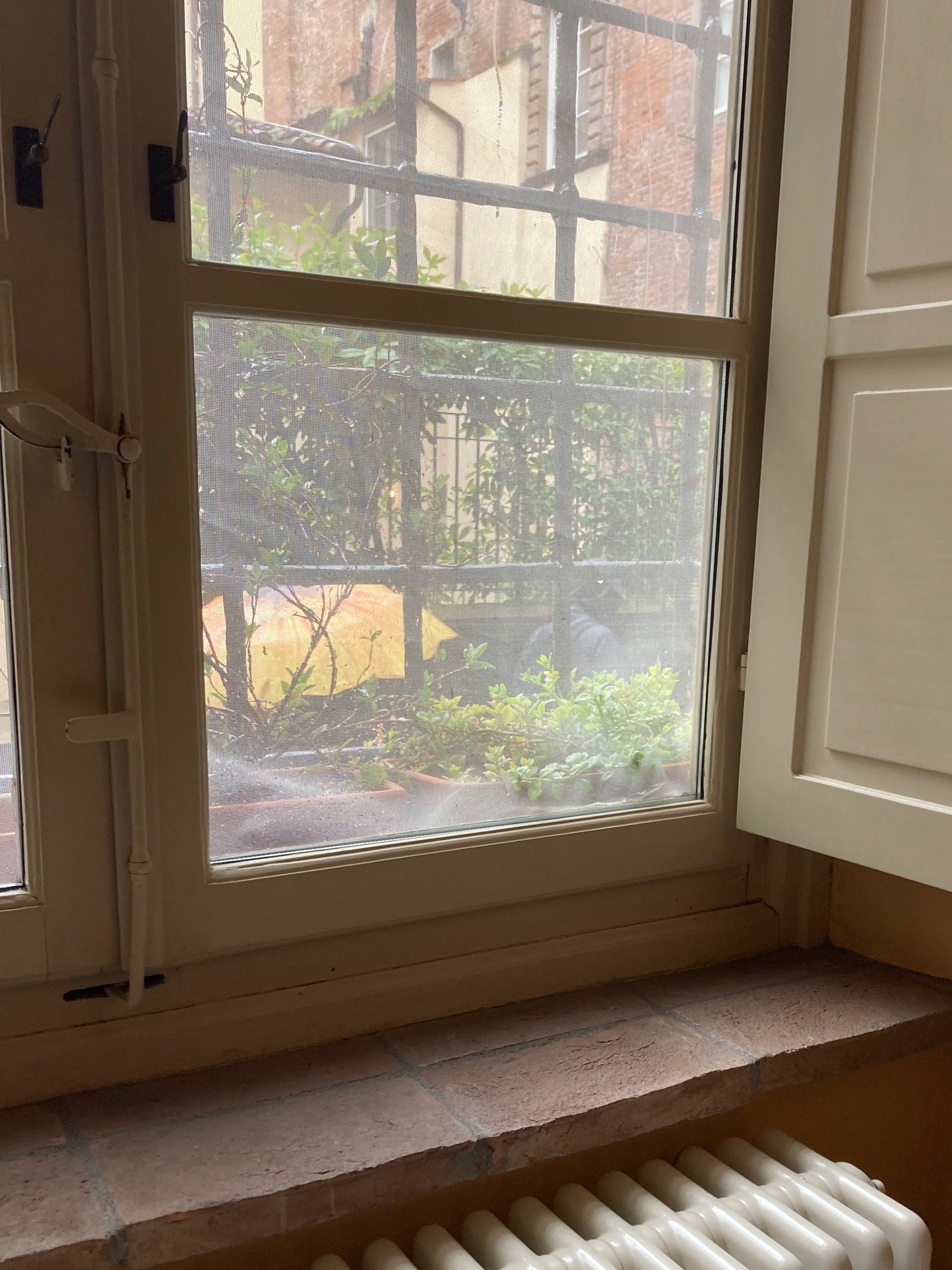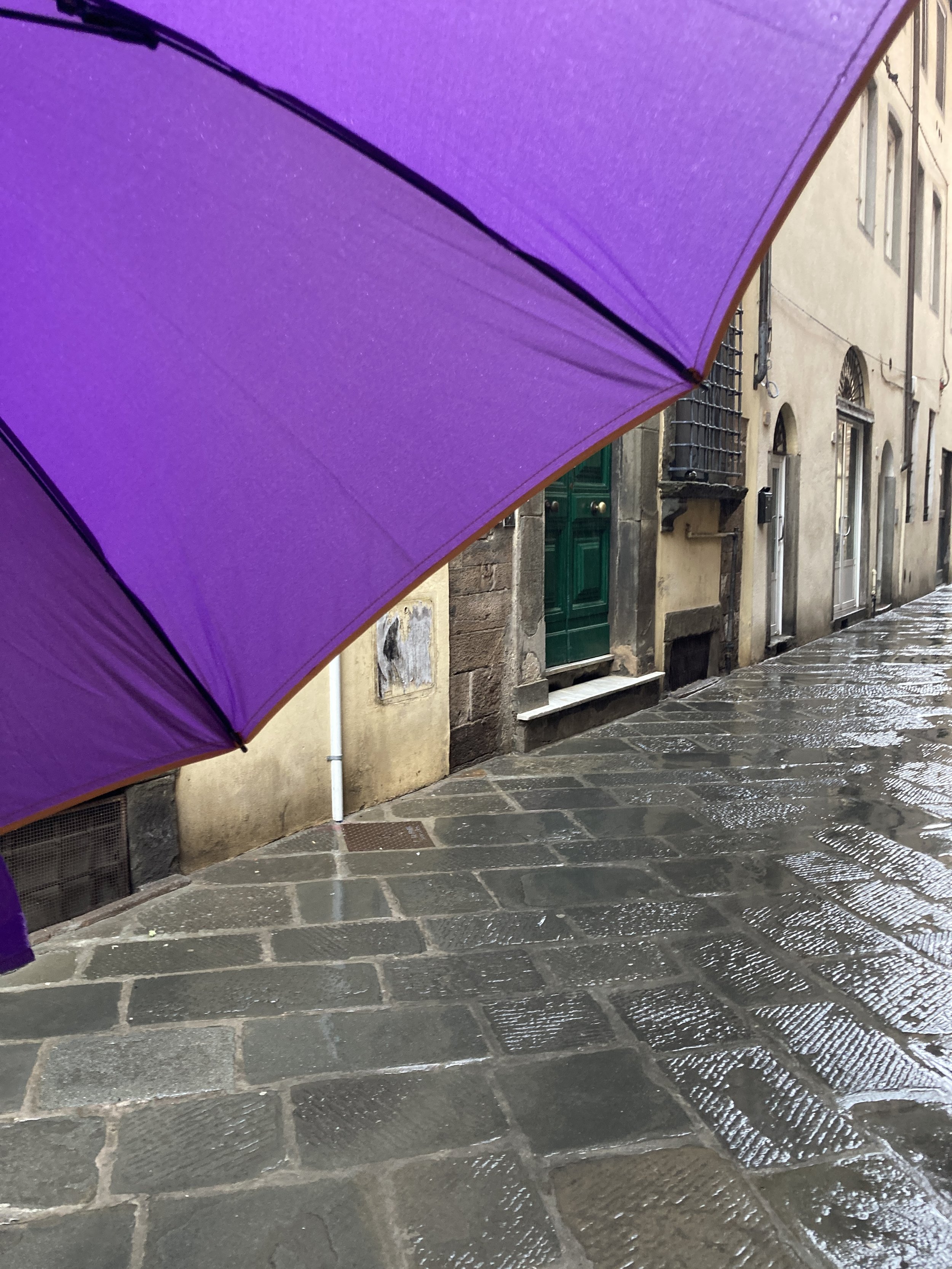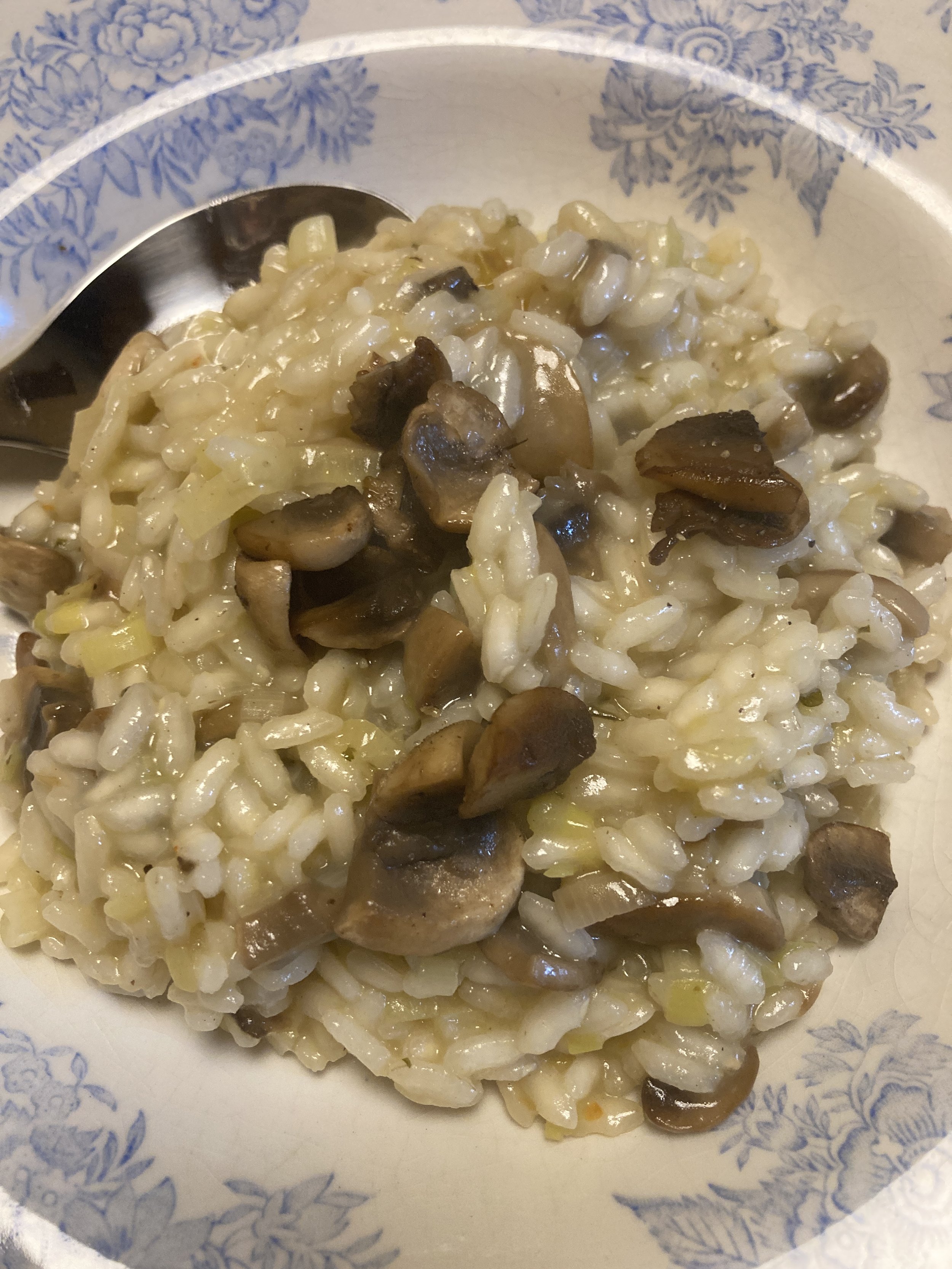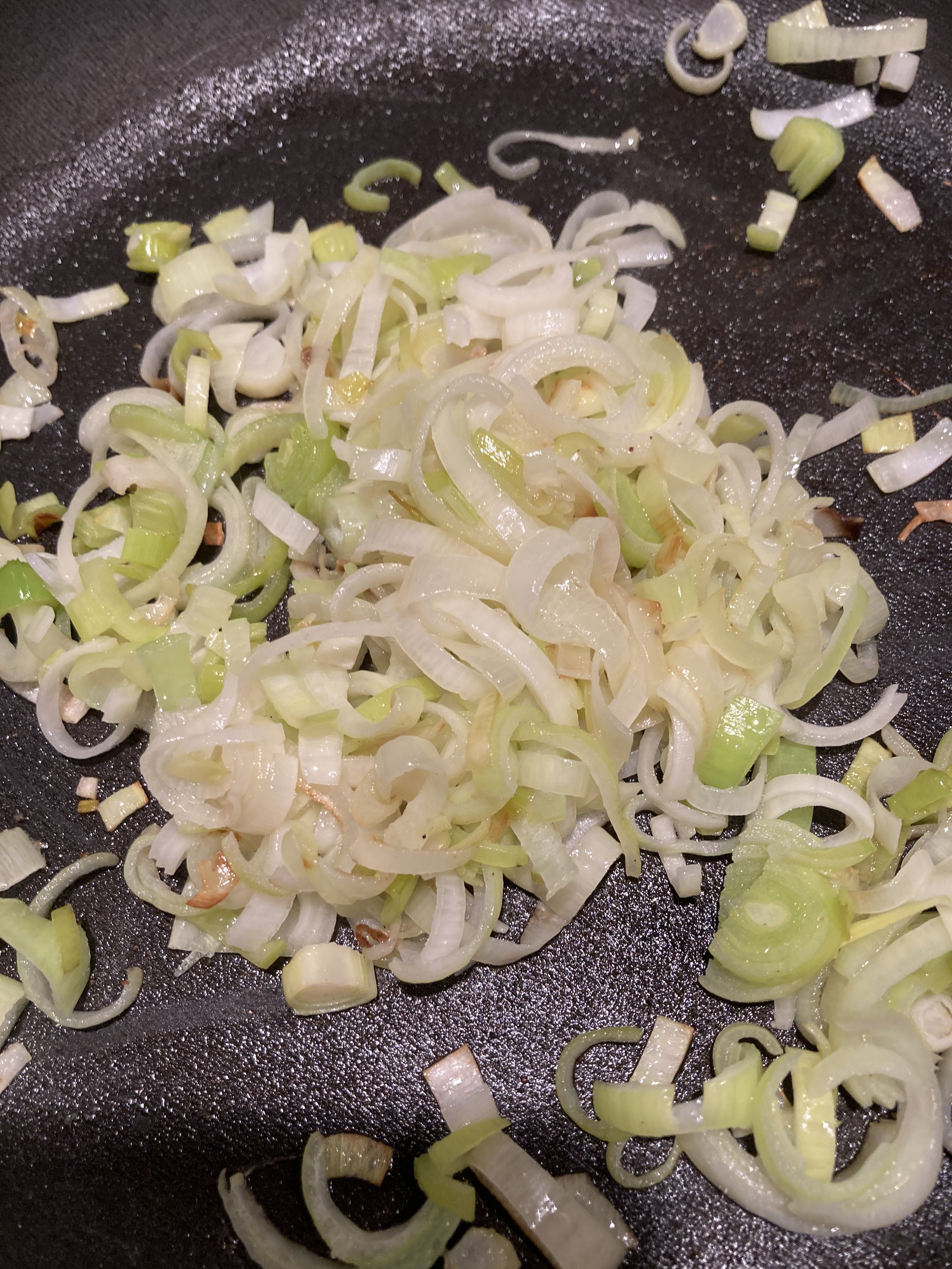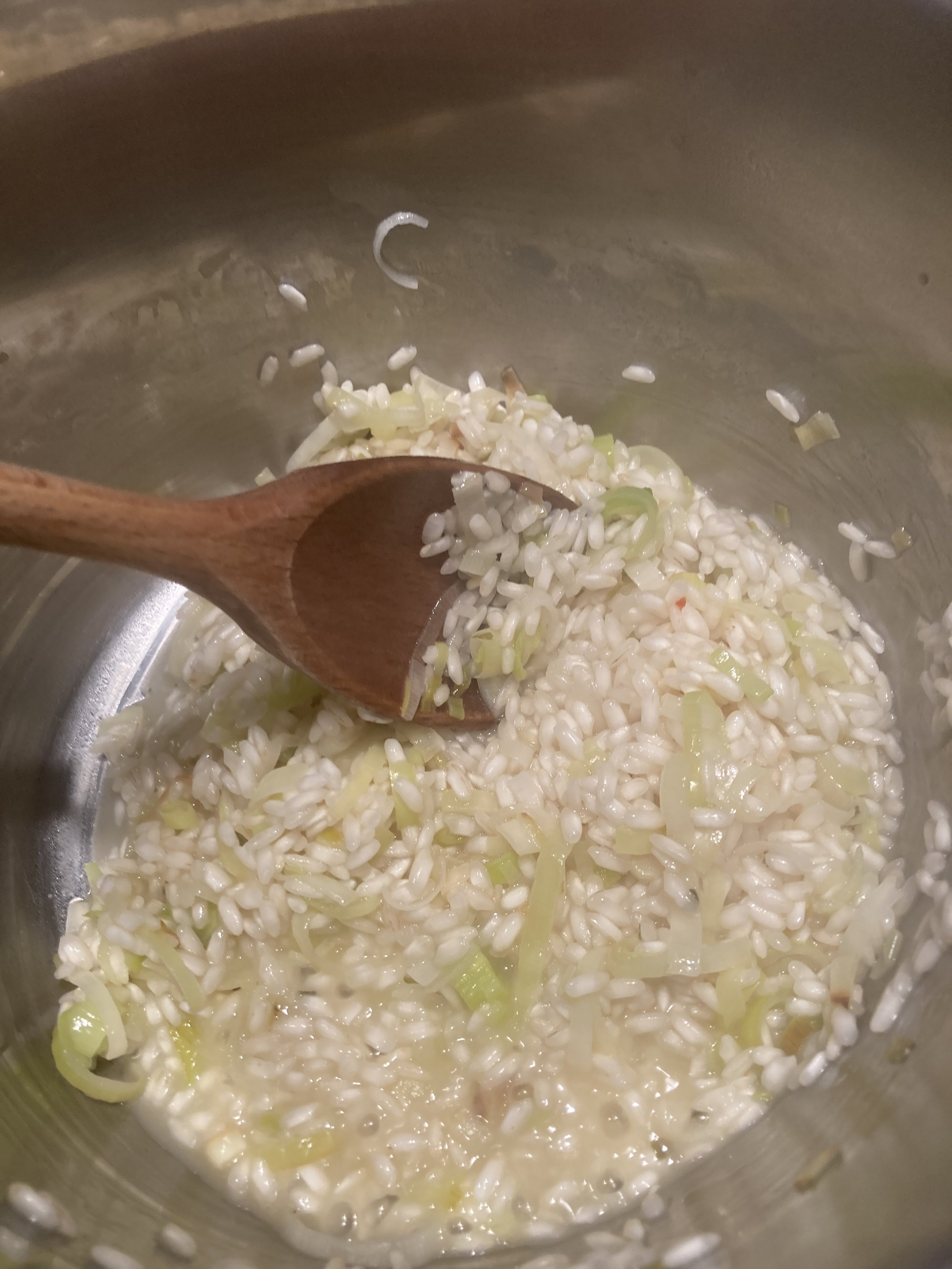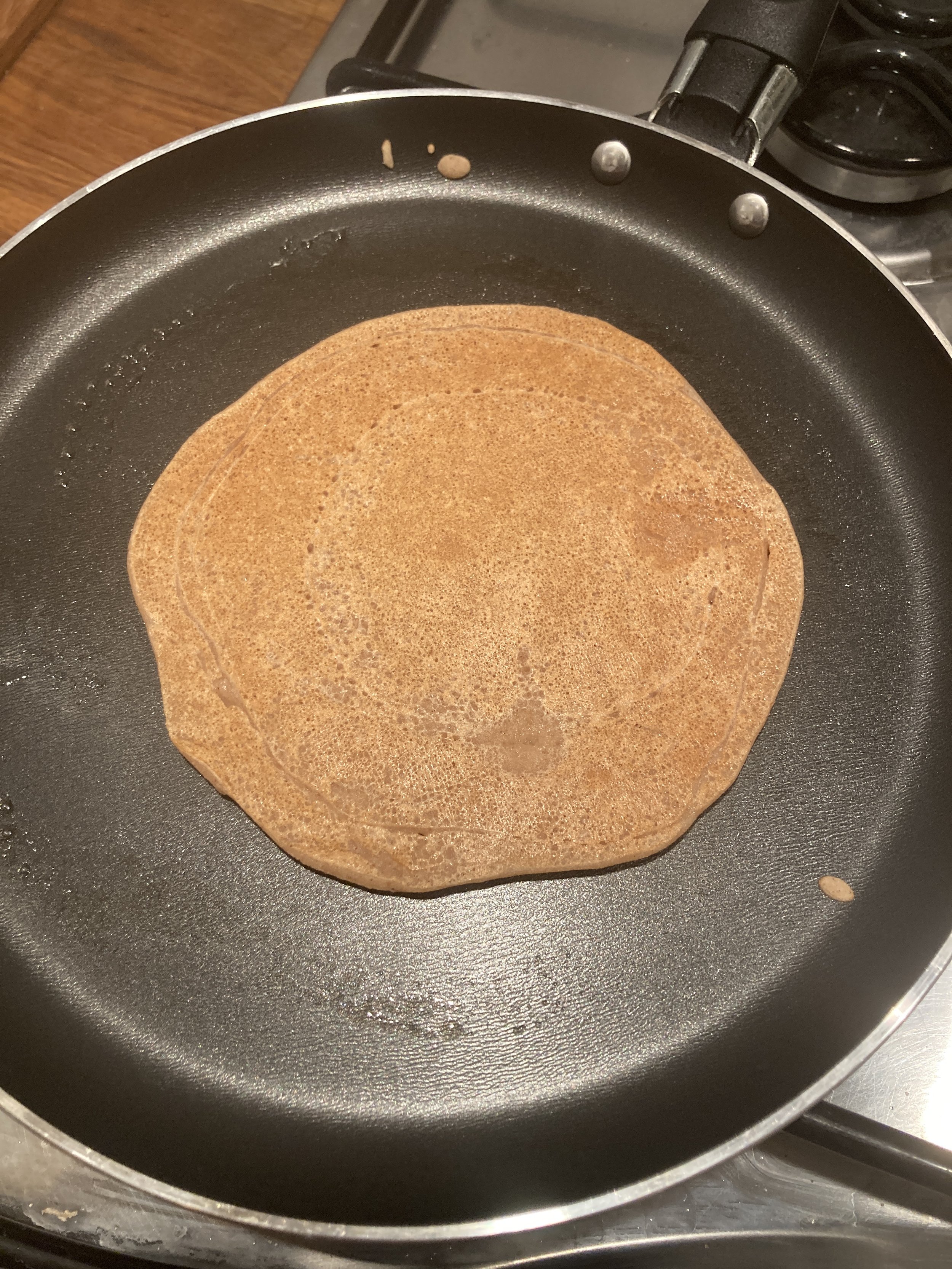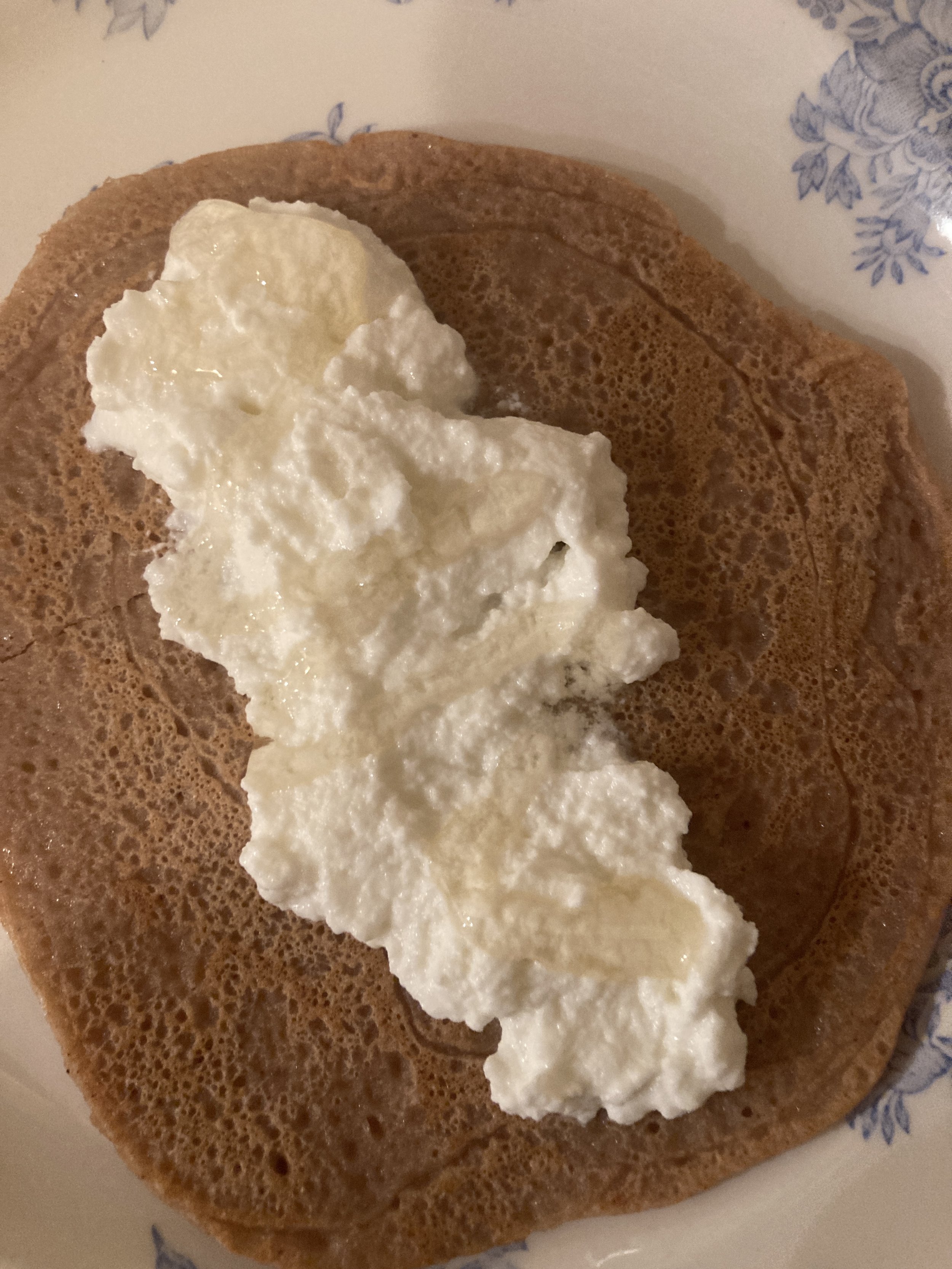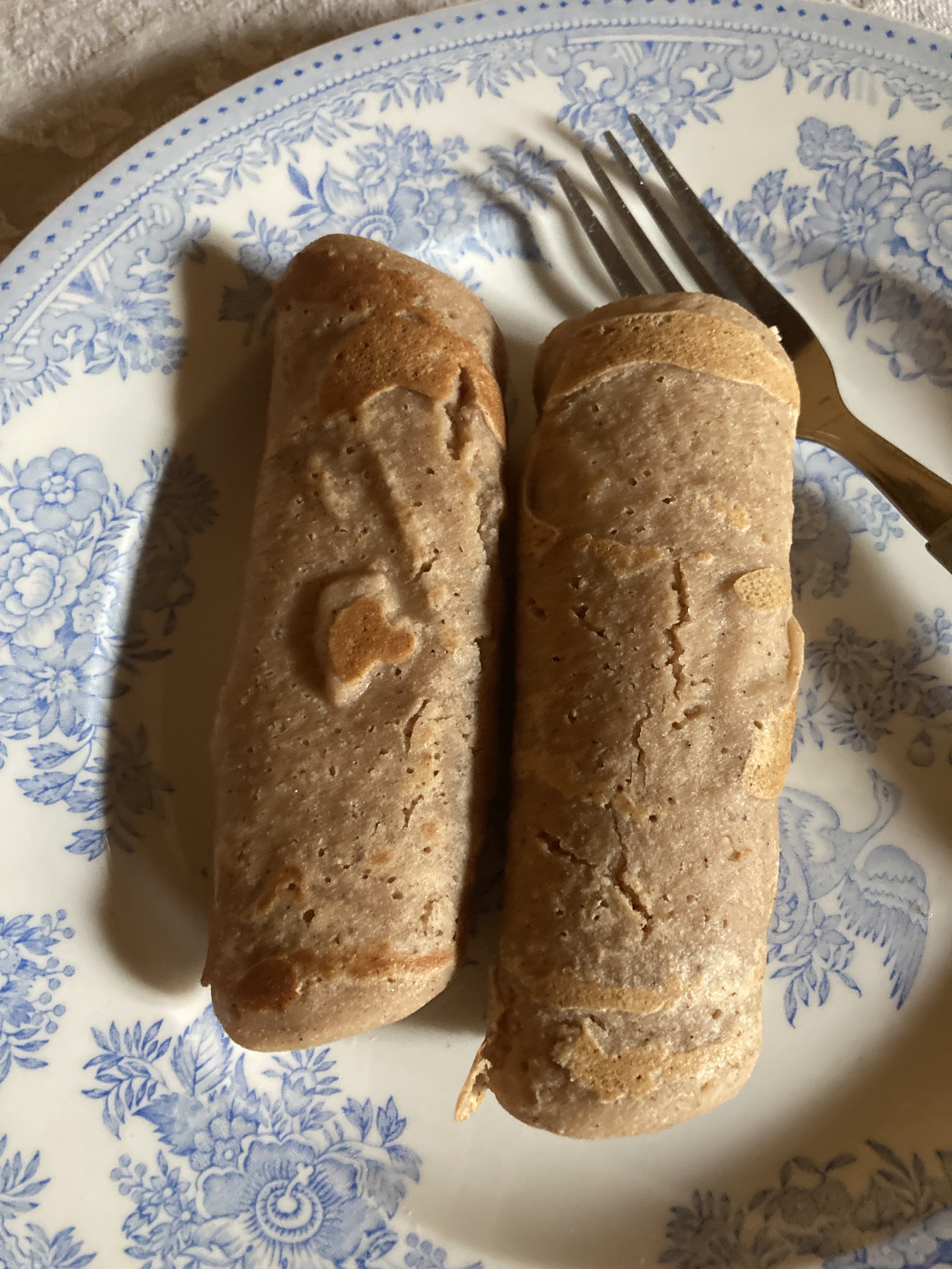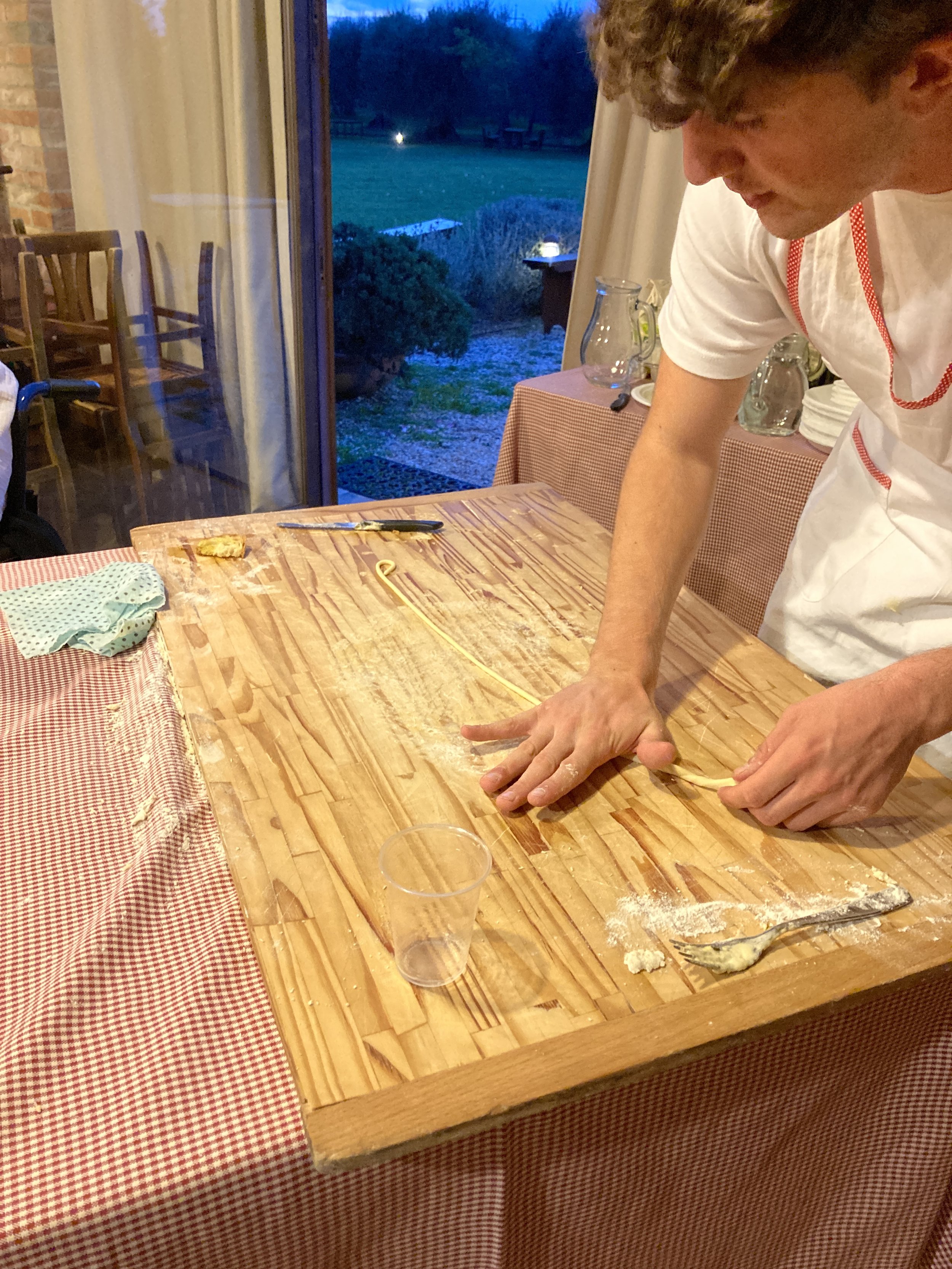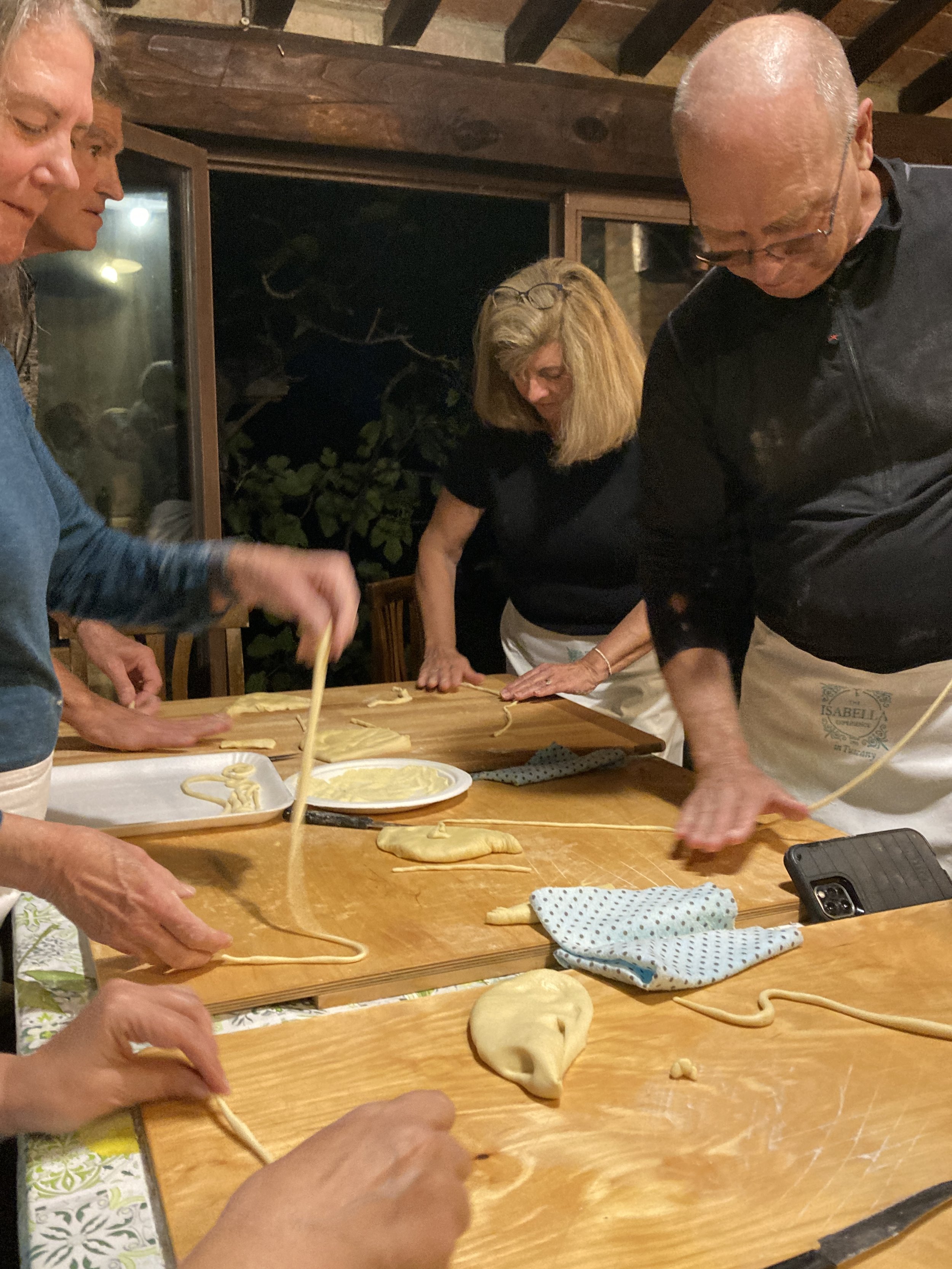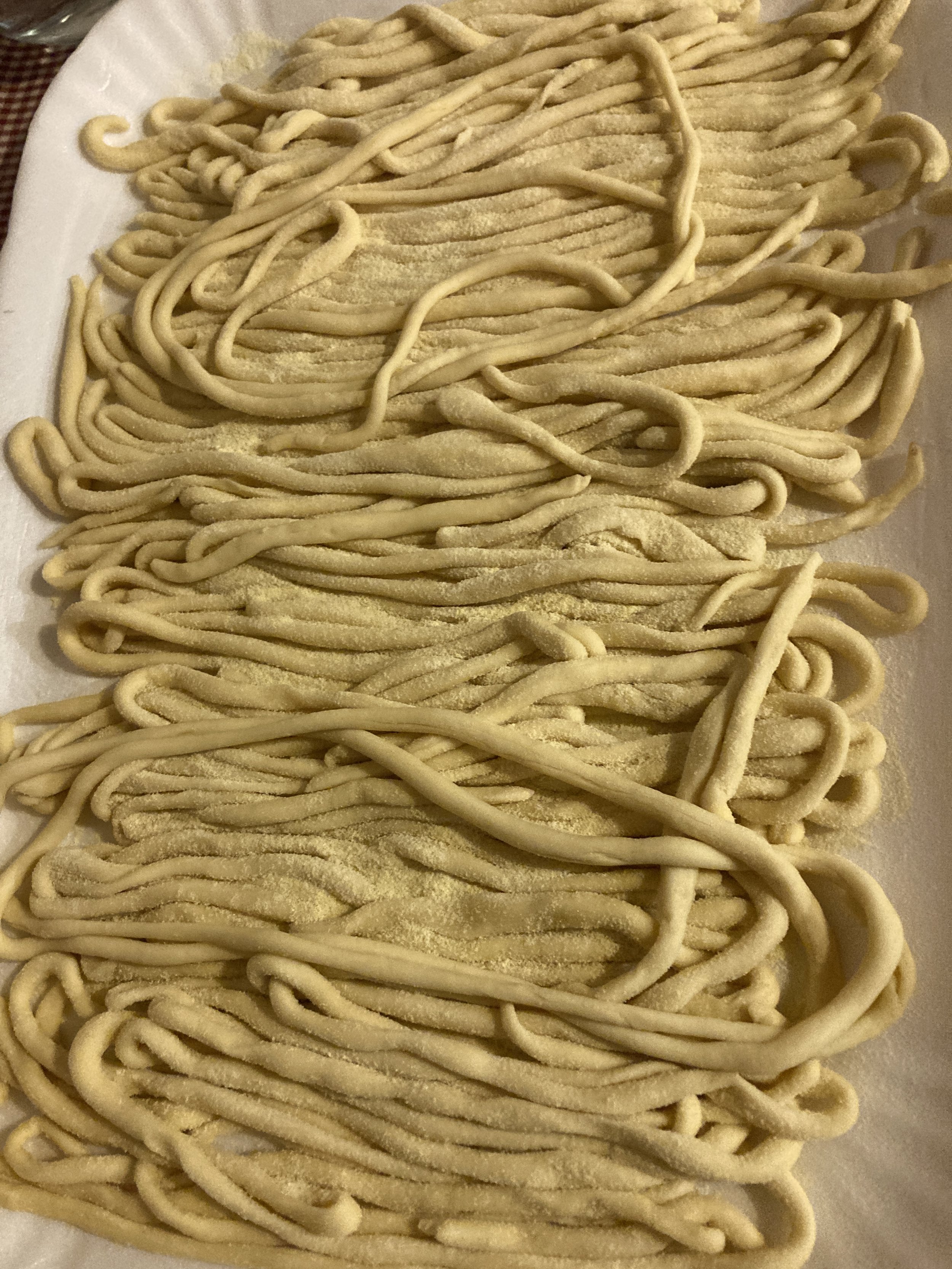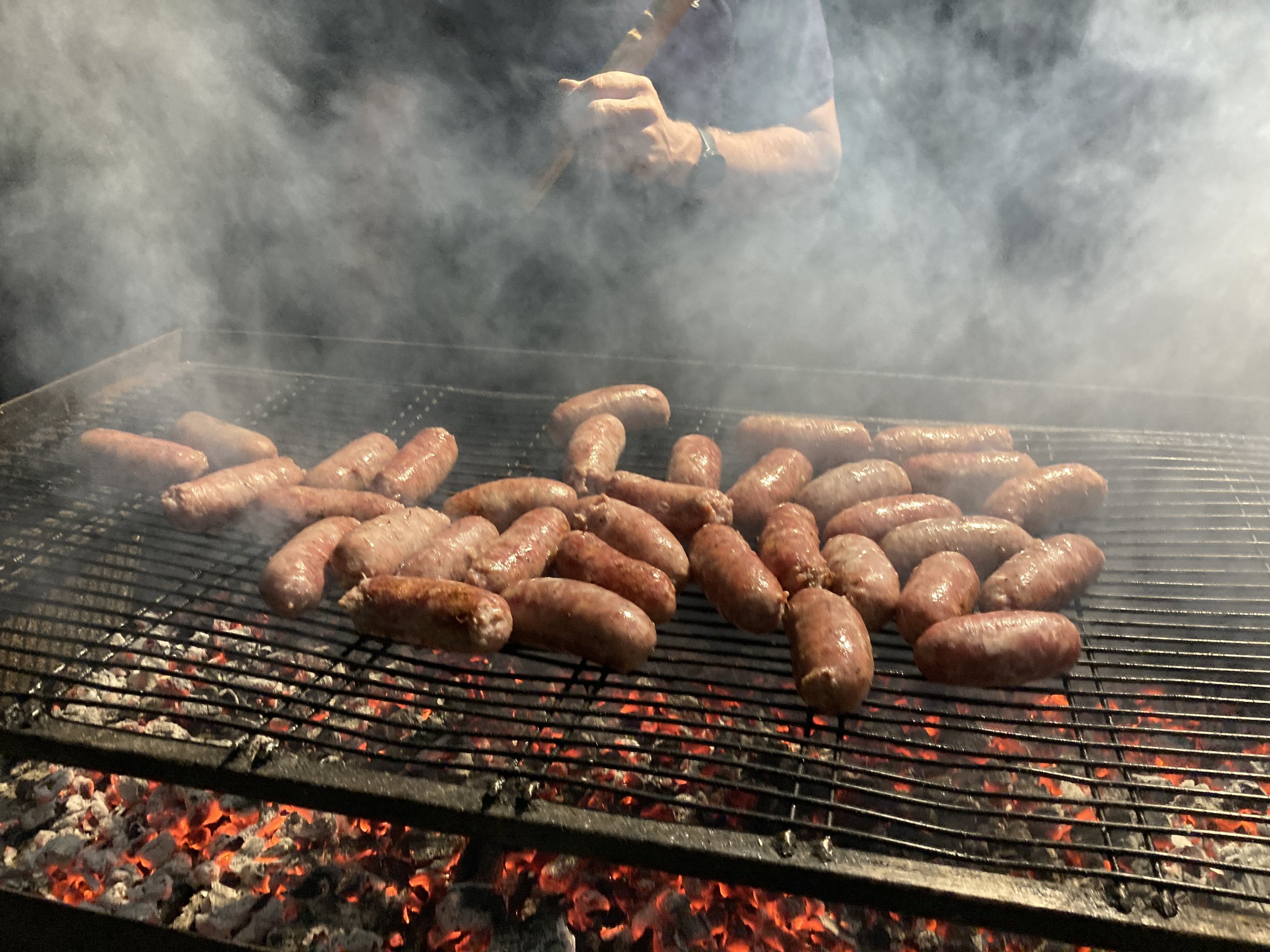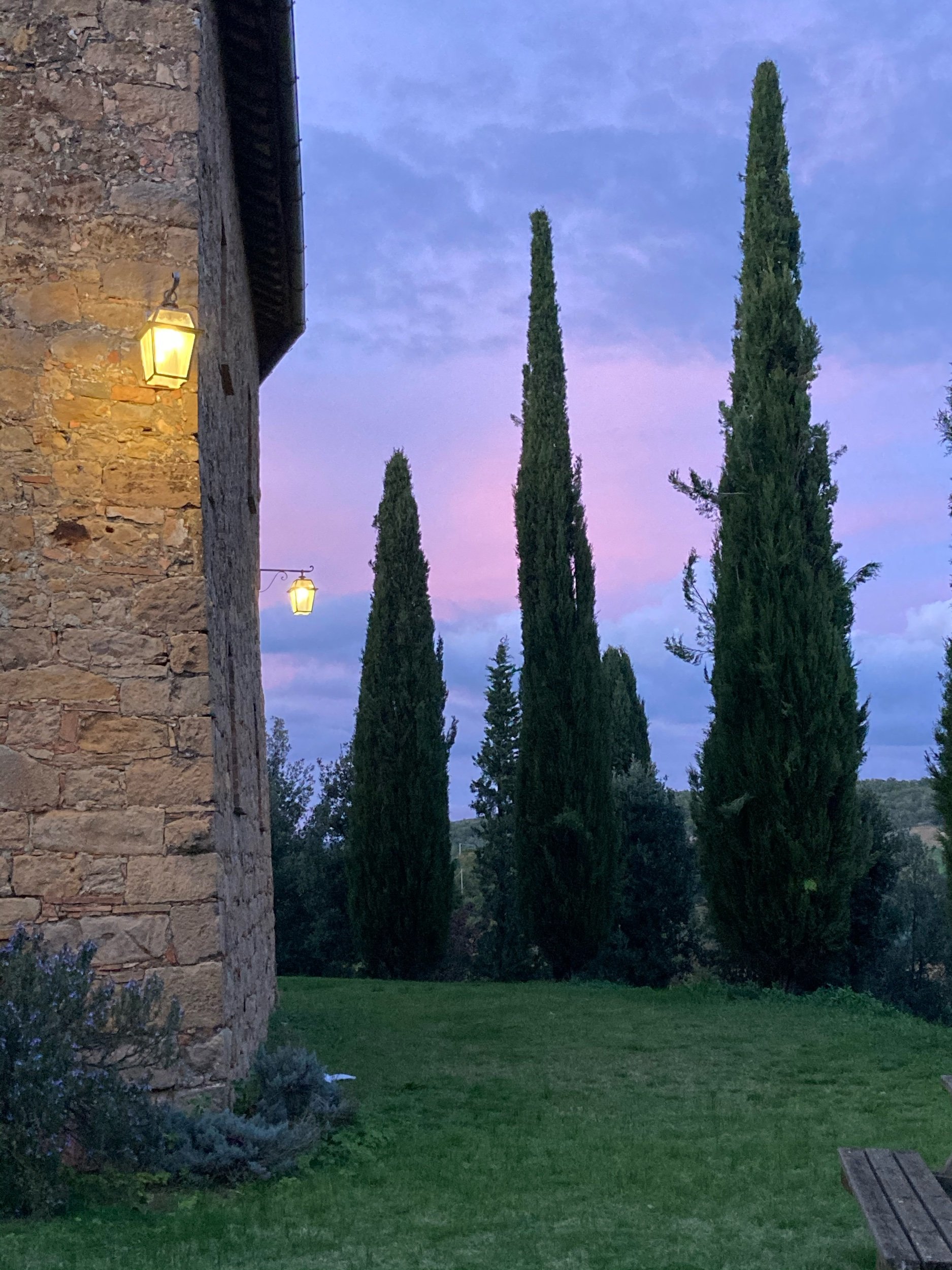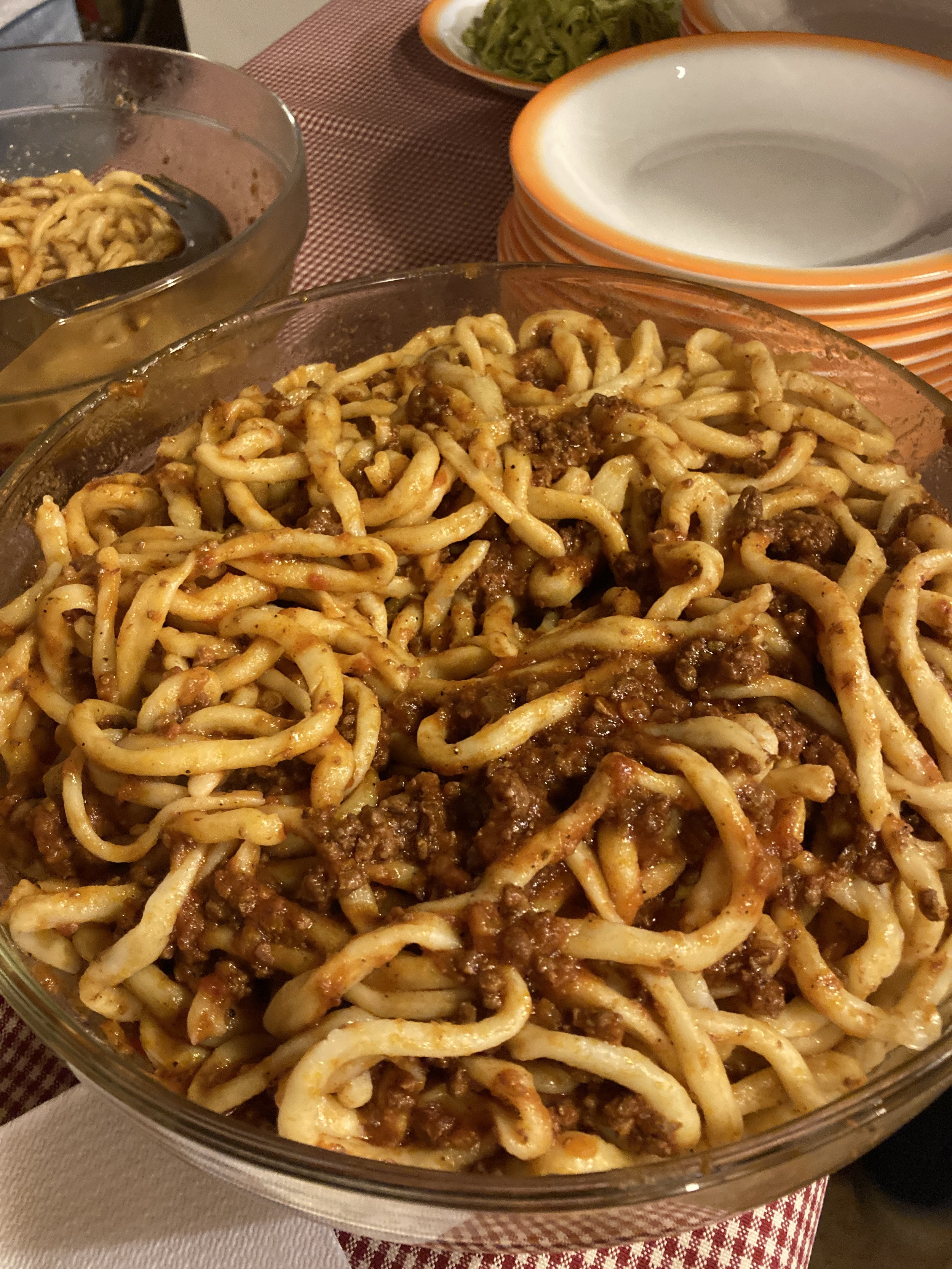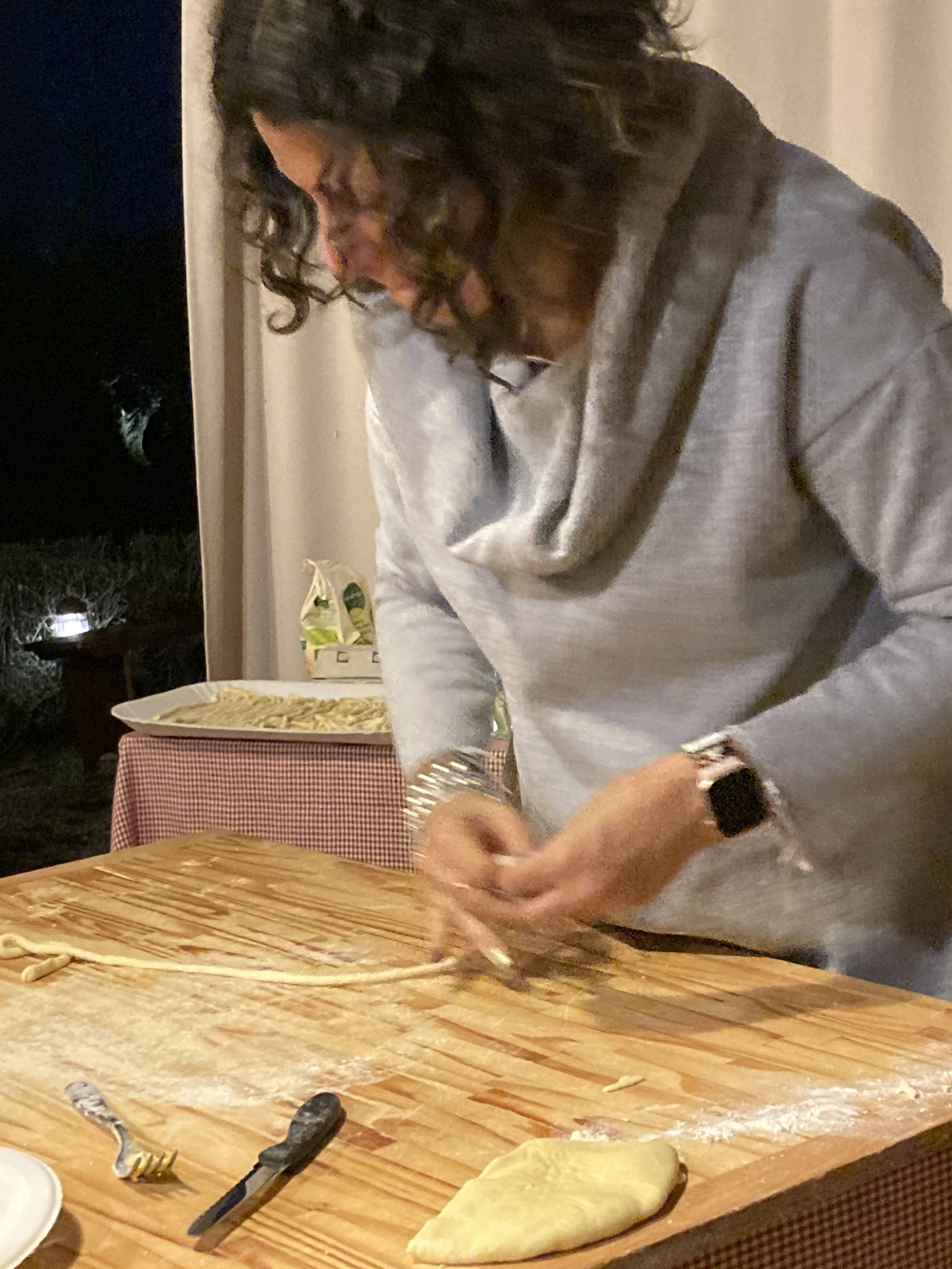From My Italian Kitchen: Pasta Primavera
“Piselli pigri” fresh from the market, with Tropea onions, mushrooms and asparagus
When the warmer weather of spring and early summer arrives, it is time to put away winter recipes and start cooking with the best produce the season has to offer. Later in summer, ripe tomatoes will take center stage as the basis for Caprese and Panzanella salads, but right now fresh peas and bright green asparagus are at the top of my list.
For the past couple of months both have been available at the markets in Italy. Even better for me, I can buy piselli pigri (lazy peas) at the Ortofrutta (vegetable and fruit market) in Lucca. I call them lazy peas, but it is really the cook (me) who is pigra (lazy). Piselli pigri are fresh peas already shelled at the Ortofrutta and placed in bags, eliminating all the work but none of the flavor. A lazy cook’s dream!
The combination of fresh peas and asparagus, along with some onion (I like to use Tropea but yellow onion works just fine too), a lot of mushrooms, and a bit of diced prosciutto cotto (cooked ham) comes together to make a tasty Pasta Primavera (a spring style pasta). This is the perfect warm weather pasta dish, chock full of veggies and with very light on the sauce.
The little bit of sauce it does have, just enough to slightly moisten the pasta, comes from cooking the onion, peas, and asparagus in butter, allowing the veggie juices to mingle with the butter flavor. More flavor comes from quick cooking the mushrooms in hot butter in a separate pan. These ingredients are then combined with cooked linguine tossed in, yes, more butter. The last step is to sprinkle the pasta with parmesan cheese. The simple fresh flavors taste just like spring.
Notice the rough surface of this pasta - perfect for making the very light sauce cling to the pasta.
The recipe is quite flexible. When fresh asparagus isn’t available I simply leave that out and increase the amounts of the other veggies. No fresh peas? Frozen ones will work too. In the United States I use a thick slice of Virginia ham in place of the prosciutto cotto. And sometimes, just for fun, I use cubes of crisp pancetta in place of the ham. This is a dish that lends itself to experimentation. To get the best results, use the best pasta available. The one pictured here, La Molisana brand, uses a bronze extruder to form the pasta, leaving it just a bit rough and able to cling to the light sauce of this pasta dish. It also helps to use a good quality parmesan. Freshly grated is always best, though I am not above buying some already grated (another shortcut for the pigra cook).
The basic recipe serves 3 as a main dish, 4 as a side.
¾# linquine
8 tablespoons butter
¾ cup fresh peas, blanched for about 5 min (or use frozen peas straight from the freezer without blanching)
¾ cup fresh asparagus, cut into 1” pieces and blanched for 3-4 minutes. Medium size asparagus, a little larger than the width of a pencil work best. If using really thin ones you may skip the blanching, if using really fat ones it is best to trim the thickest part of the stalk with a vegetable peeler before using.
The bright green peas and asparagus look just like spring.
¼ of a yellow onion, sliced thin
½ cup cubed ham
8 oz mushrooms (white or small portobellas) ,sliced thin. Love mushrooms? Use more!
¼ cup parmesan cheese, grated
Sea salt and coarse ground pepper to taste
Melt 4 tablespoons butter in a heavy pan. Add the peas, onion, and asparagus. Sauté for about 10 minutes until the veggies are almost tender. Add the cubed ham and cook to heat through.
In a separate frying pan, heat 2 tablespoons of butter. Add the mushrooms to the hot butter and cook over a medium high heat. The mushrooms should cook quick enough that they hold their juices in and brown rather than simmer.
While the vegetables are cooking, cook the pasta. Toss the al dente pasta with 2 tablespoons of butter and toss with the grated parmesan cheese. Add the cooked veggies and ham with all of the accumulated juices. Add salt and pepper to taste. Top with the mushrooms and a sprinkle of cheese.. Serve with some extra grated parmesan.
A crisp white wine goes really well with this pasta. Perhaps a Gavi, a Grillo, or a Catarratto. Enjoy!
Pasta Primavera


